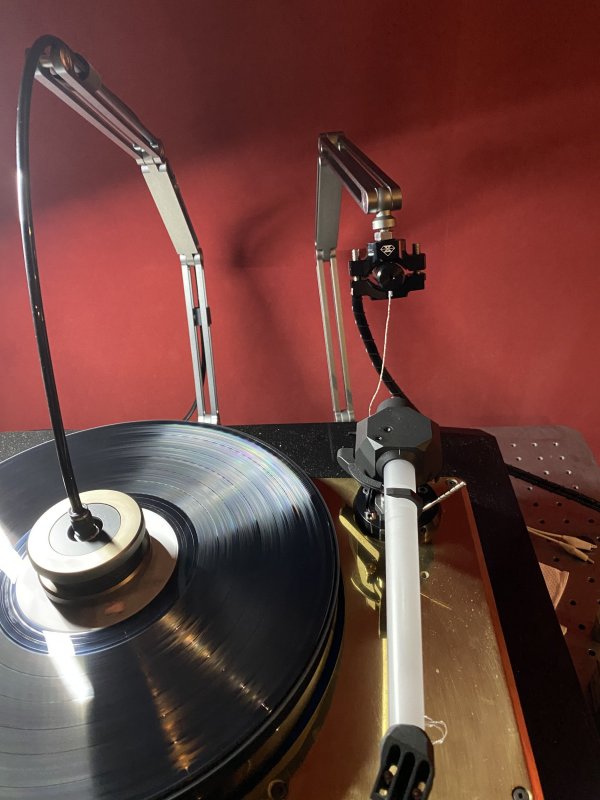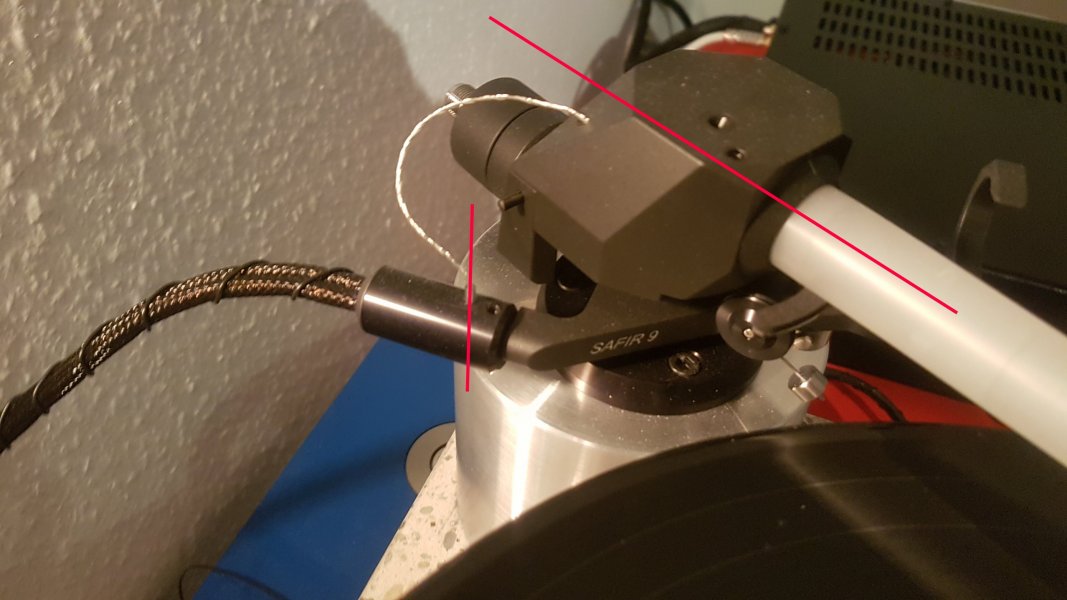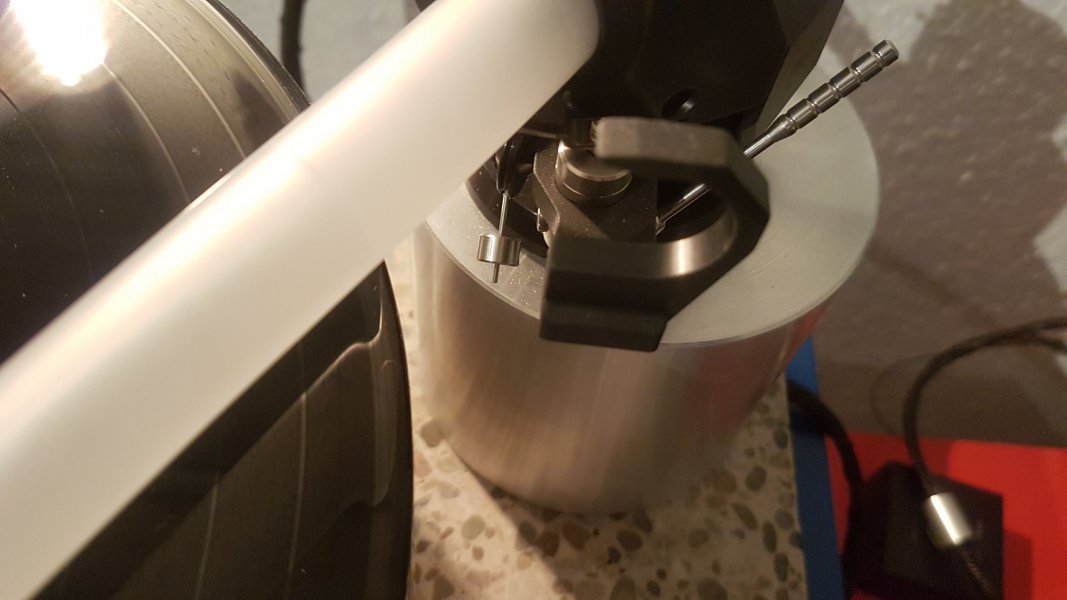I would like to share with you a tweak I am experimenting on the Safir. While the Safir has performed exceptionally in my system, I have always have this feeling that something is not perfect, and it can be even better.
I am no expert when it comes to setting up tonearms, but I have found my Safir had a slight tendency to drift outwards when I lowered the stylus onto a smooth surface, such as a piece of glass. This happened even without the anti-skate weight attached. I double checked the levelling of the platter and armboard, but no problem there!
When I reread Fremer’s review on the Safir, he mentioned the importance of dressing the wire loop exiting the arm block, which had significant effect on the arm’s free movement! That must be it I said to myself, remembering the Kondo silver wire used in the Safir was a lot stiffer that the standard wire in the 4Point.
I then looked at the photos in this thread and pretty much everyone have arranged the wire loop to go straight up when it exit the tube shape cable holder, and the wires took similar path to the arm block. I tried to mess around with the wire loop with litter success.
That is when I came up with the idea of hanging up the cable holder, so the wire loop could go pretty much straight up and down between the cable holder and the arm block. I believe with this arrangement the wire would generate the least resistance to the arm movement! It is early days of my experiment, but my initial impression is very positive. I believe the arm is moving more freely and the performance has improved. Not day and night difference, but very worthwhile improvement for an arm which has already performing magnificently before!
I’ll be glad to have your feedback should you choose to try this tweak
 View attachment 120371
View attachment 120371













